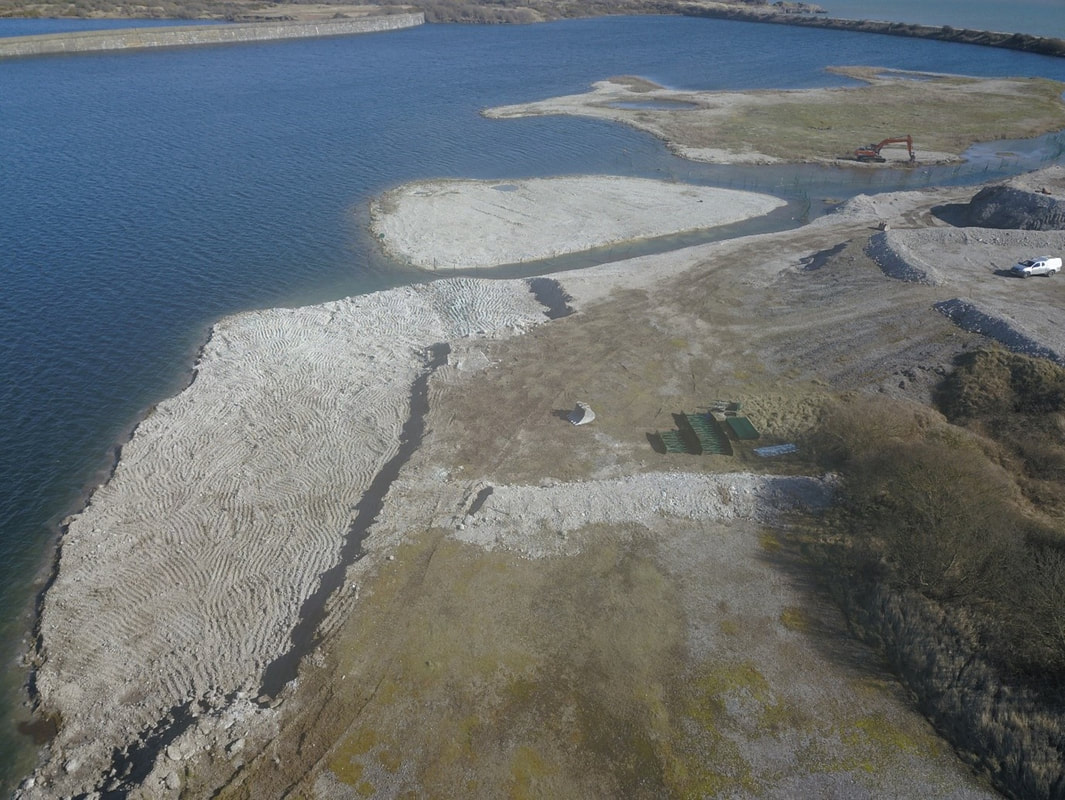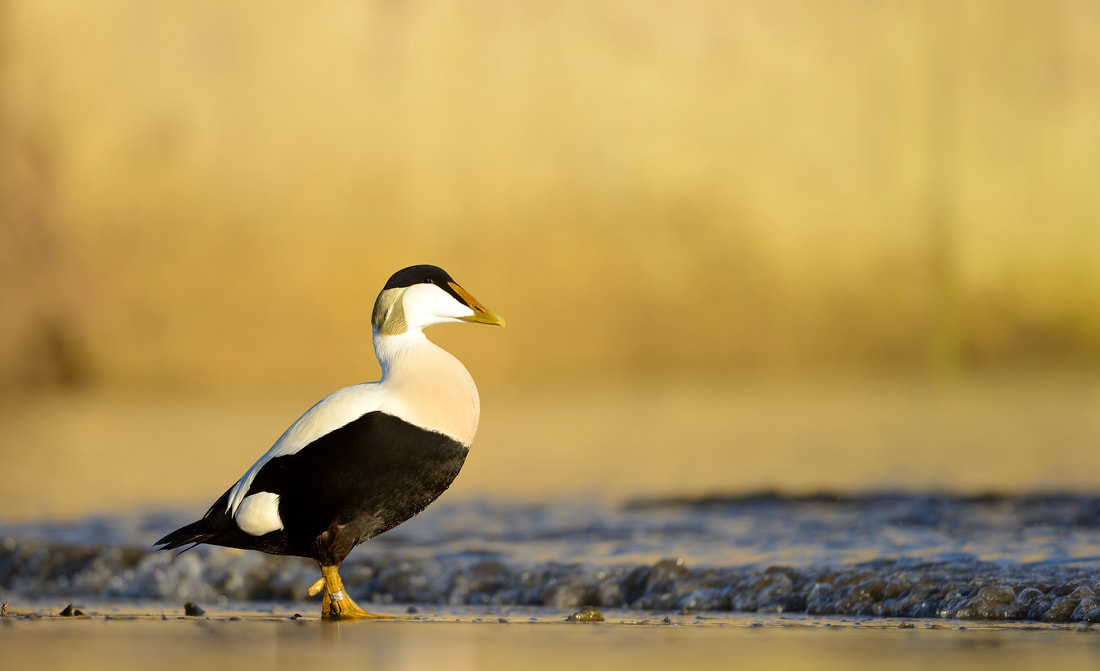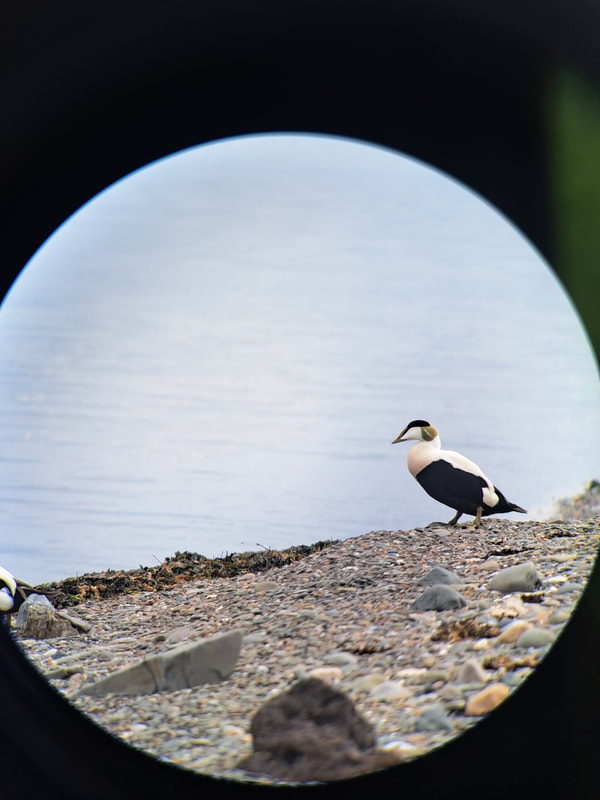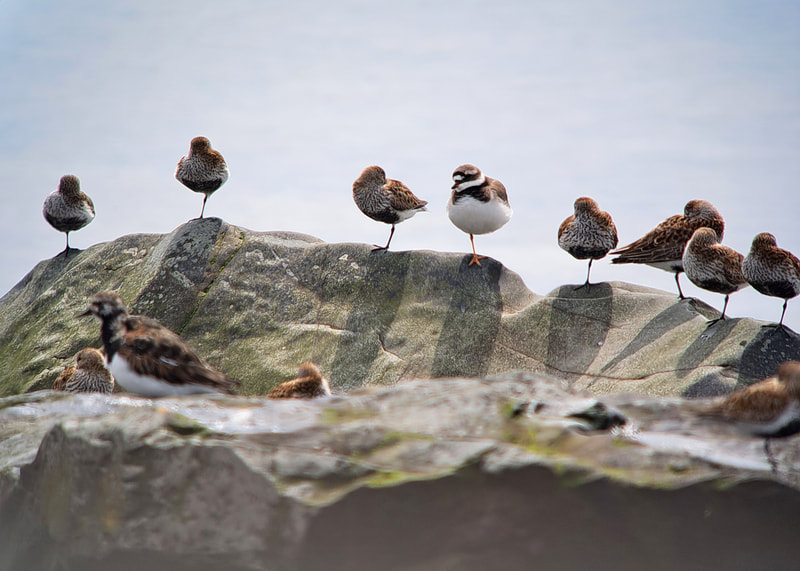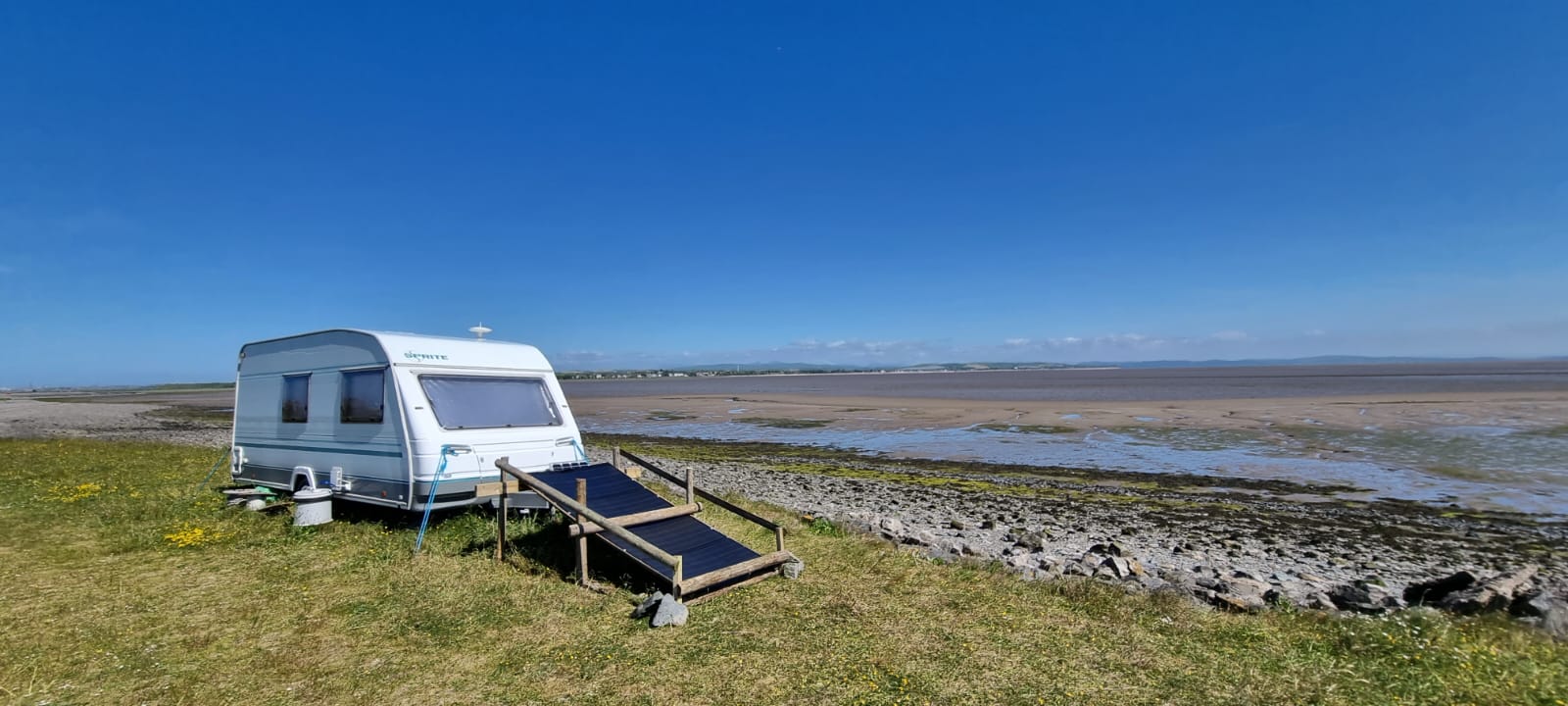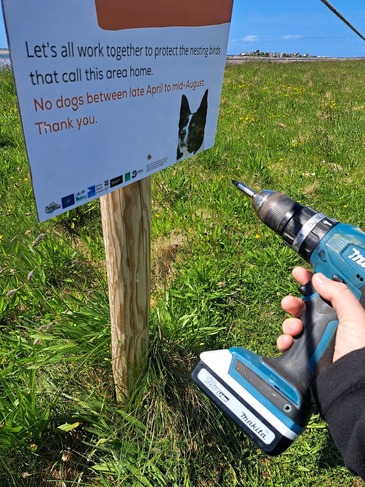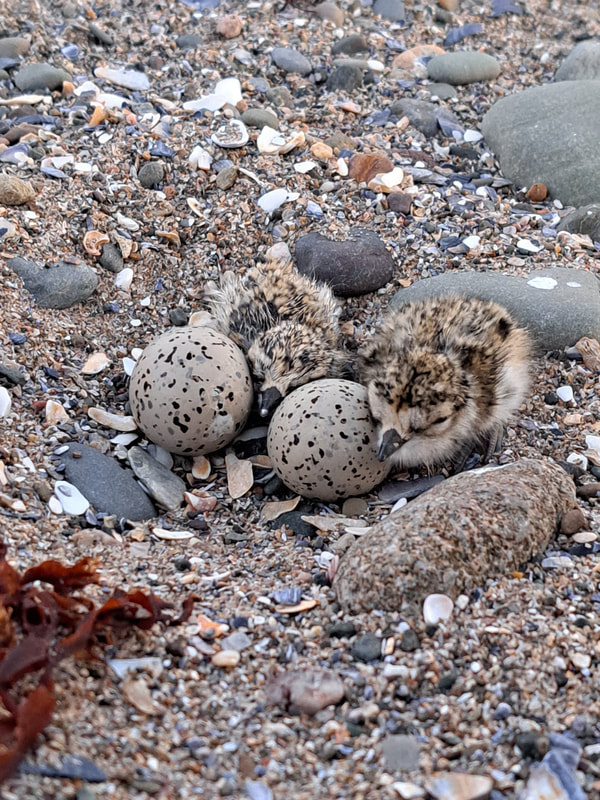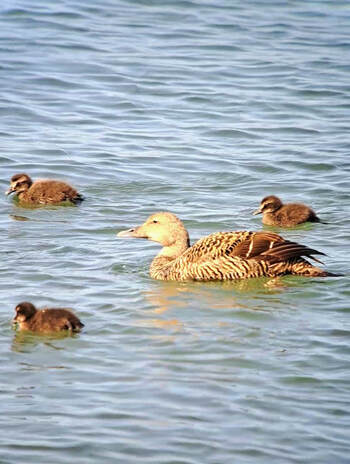|
Happy World Seabird Day! July 3rd is the annual World Seabird Day, chosen to mark the last recorded sighting of the now-extinct Great Auk in 1844. We've marked today with a blog about the seabirds and waders at South Walney Nature Reserve by Rebekah Watts, Shorebird Warden, Cumbria Wildlife Trust The Reserve South Walney Nature Reserve is a coastal reserve which has been managed by Cumbria Wildlife Trust since 1963. Located at the Southern end of Walney Island, South Walney Nature Reserve is comprised of a variety of habitats such as dunes, saltmarsh and shingle. This combination of habitats makes South Walney a very appealing location to a wide variety of birds and other wildlife. South Walney is a site of special scientific interest (SSSI) and a special protection area (SPA). The birds and disturbance Many bird species reside at South Walney Nature Reserve and throughout the year this reserve is home to species such as ringed plover, oystercatcher and eider. Black tailed godwit, dunlin and knot are examples of wintering species and through the spring and summer, species such as wheatear and little tern spend their time here. During the breeding season, March through to August, many species breed at South Walney including the UK’s second rarest seabird; the little tern. There is no beach access and dogs are not permitted. These restrictions immensely reduce the stress to nesting birds, allowing them to raise their chicks. Livestock grazing and the wild population of rabbits ensure that the habitat is in perfect condition for nesting birds such as great black back gulls and lapwing, who choose short grass when nesting, allowing them to observe predators from their position. The largest gull colony in Europe, comprised of herring and lesser black backed gulls, used to reside at South Walney Nature Reserve, with numbers in excess of 45,000. Due to predation these numbers dropped dramatically, to around 400 pairs. The installation of a predator proof fence has allowed these numbers to begin recovering. Last breeding season, 2023, the total colony number was 1630 pairs and it continues to rise. The ground nesting birds that choose Walney as their nesting grounds are in decline. Despite the apparently large amount if herring and lesser black-backed gulls seen in towns, their numbers are falling. Lesser black-backed gulls are amber listed and herring gulls are in even poorer numbers and are a red listed species of concern. Little terns are also amber listed as well as being a schedule one protected species. Ground nesting birds are easily disturbed. The separation from their eggs and chicks can result in predation from other species such as crows and foxes, and eggs can be cooled. Energy loss can be fatal to a bird, using up energy stored for hunting for food. Repeated disturbance results in adults abandoning chicks and eggs due to stress. Other Wildlife The benefit of these restrictions is not limited to birds. South Walney Nature Reserve is home to a thriving grey seal colony. Cumbria Wildlife Trust’s marine team conduct surveys on these seals during their breeding season, and counted 409 individuals on their last count. The lack of beach access allows the seals to haul out and moult, breed and digest their food without interference. Other mammals such as otters, foxes, stoats and badgers also call this reserve home. Marine wildlife can also be seen when sea watching at South Walney Nature reserve, including bottlenose dolphins, harbour porpoises and recently, a basking shark! So why is Walney important! The combination of habitats at South Walney Nature Reserve allows many ground nesting species with different requirements to nest and here successfully. For example, grazed pasture and saltmarsh allows lapwing to nest and to provide their chicks with the correct diet, teaching them to feed on invertebrates in muddy margins. Another example is little tern, who create their nest in sand and shingle, fishing for sand eels in the sea. When given respect and space, ground nesting birds can succeed enormously and that is why it is so important to offer these amazing birds a safe place to lay their eggs and raise their chicks free from disturbance. South Walney Nature Reserve is able to provide this environment and with the public, volunteers and staff with the same vision, wildlife is able to thrive. Link to Bekka's other South Walney blog
First blog: LIFE at South Walney Second blog: Nesting Season Preparation Photo credits: Rebekah Watts
0 Comments
Blog by Rebekah Watts, Shorebird Warden - South Walney, Cumbria Wildlife Trust Nesting Season Spring has finally arrived and with it, changes are occurring. Flowers are blossoming, days are lengthening and here at South Walney Nature Reserve, birds are carrying sticks and feathers and nests are popping up along our beaches which means that nesting season has begun. Nesting season is the most important time of year. The productivity of our birds is highly important and to assist them during this season, a lot of preparation is undergone during the Autumn and Winter months. Nesting Season Preparations Funding provided by ‘LIFE on the Edge’ (also known as LOTE) helps substantially at South Walney nature reserve when it comes to nesting season. LOTE is a Life Nature project which is lead by the RSPB and National Trust. This project aims to improve the quality of target coastal areas as well as providing recommendations for longer term coastal habitat management and/or creation, with focus on little tern, oystercatcher and ringed plover. LOTE have provided South Walney with equipment for electric fences such as solar panels and energisers, monitoring equipment such as trail cameras and thermal scopes and permanent hybrid fencing. LOTE also provides funding for a seasonal shorebird warden to work with the sole purpose of protecting coastal nesting birds. With the help of LOTE, we at South Walney are able to provide protection to nesting coastal birds throughout the season. Preparation for nesting season begins in late August / early September. At this time, we start checking our permanent fences for damage and repairing them. Debris is removed and the gates are shut to stop livestock from entering. Holes in the fence are repaired, wire is replaced and holes dug by predators into the fenced area are filled in. The area around the electric fence is cut back with a brush cutter to reduce interference with the wires. The inside of the fence is also brush cut to create the correct nesting habitat. The fence is now ready to be made live closer to the start of the season. During the nesting season, temporary electric fences and signs explaining what we are protecting are erected. Before this, the area around the perimeter of the fence is brush cut and litter picks are completed. During this season and the previous season, an area of land to past the boundary wall of the reserve to the north was fenced. This land was kindly temporarily loaned to South Walney Nature Reserve, as little terns choose this location to nest. The habitat is shingle and sand, close to the sea which is a perfect location for terns to nest and fish. To provide more habitat for nesting coastal birds, a tern raft is moved into place, floating in the pool of the oyster farm. The anchors are dropped, a camera is installed and the raft is ready for occupants. There is a permanently placed raft which is used by the same Oystercatcher pair each year. The parents are currently sitting on eggs there now! Chick shelters, nest cages and cameras are important to protect vulnerable chicks and adults from predators and extreme weather. Shelters of different shapes (for different chicks) are placed on the tern rafts, inside the fences and along the beaches to provide shelter and safety to chicks. Cameras are crucial for monitoring wildlife. They are placed directly on nests and at crossing points to catch predators. Cameras are placed out early in the season and checked regularly throughout the season. New to 2024 A new sound lure and hand-crafted little tern and herring gull decoys were created in 2024. In an attempt to attract a mixed gull colony of herring and lesser black backed gulls to nest in a new location, 10 adult and 6 juvenile herring gull decoys were created and placed in a temporary 8 strand fenced area. This fence was put in place at the start of the season with decoys and a trail camera, and has successfully attracted first year herring gull visitors since the addition of the decoy birds. We hope to see these gulls return next nesting season! To attract little tern, 40 little tern decoys were crafted and placed on the tern raft, in the temporary 12 strand fence to the north of the reserve and in the fenced area on Foulney island nature reserve. In combination with the decoys, a sound lure was created and is played on loop in the daylight hours. This has successfully attracted 12 pairs of little terns and we are hoping to see chicks in the next couple of weeks. Good Luck, Birds! Now that fences are live, decoys and sound lures are in place and cameras are being regularly checked, it’s up to the birds to raise their young. We wish them the best! Link to first South Walney blog by Bekka: LIFE at South Walney Photo credits: Rebekah Watts Blog by Rebekah Watts, Shorebird Warden - South Walney, Cumbria Wildlife Trust Hi! I’m Bekka, and I’m this year’s shorebird warden at South Walney Nature Reserve for the 2024 nesting season. I am a residential warden. This amazing and diverse reserve is teeming with wildlife including many bird species, and that is what I am here to protect. As a shorebird warden it is my job to protect and observe my target species: little tern, oystercatcher, ringed plover, great black backed gull, lesser black backed gull, herring gull and lapwing. What wildlife can be seen at South Walney Nature Reserve? Walney is home to a large, thriving grey seal colony, with more than 400 individuals. Pupping season starts in September, and watching the little white pups laying on the beach under the watchful eyes of their protective mothers is always a treat. Our amazing mammals include otters, badgers, foxes and stoats. These mammals are rare and exciting to spot here! Sea watching from out sea hide can yield even rarer sights; including bottlenose dolphins, harbour porpoises and recently, a basking shark! South Walney Nature Reserve is home to many incredible species of birds, including wildfowl, wading birds and passerines. How does a shorebird warden protect shorebirds? I monitor my target species by completing shorebird surveys, low tide nest counts and trail camera surveillance. The wonderful team of volunteers and I maintain the electric fences which protect the gull and tern colonies from predators such as foxes and badgers. When eggs are found I take into account the incubation period and use this to calculate hatch dates. I place cages around nests which are outside the fence and then I wait! When eggs hatch, I revisit the site of the scrapes (nests) and watch for signs of life such as parents carrying food for their chicks or a view of the chicks themselves. All of this helps me to work out the productivity of each species in this area. Visitor engagement is also an important part of my job. I explain the issues of disturbance of both birds and seals, teaching people how to reduce disturbance and to share outdoor coastal spaces with wildlife in positive way, such as moving away from a distressed bird, staying 100m away from hauled out seals and not forcing wildlife interactions. When ground nesting birds feel threatened, they may abandon their eggs or chicks, or may perform a distraction display, which expends a lot of energy which the bird has stored to find food. All of these responses leave chicks and eggs vulnerable to predation. Working together we can protect these vulnerable species and give them the best chance at a successful nesting season. An example of a monitoring week 2024 season up to June Passerines, perching birds (up to now) in 2024 Although these species aren’t on my target list, I am still monitoring their success. The table below shows the species which have been successful in the 2024 nesting season so far: Shorebirds (up to now) in 2024 Fox predation has been an issue this nesting season and due to this there are less nests than in the previous season, however our fences are providing protection to many of the species listed below: Wildfowl (up to now) in 2024 As with the passerine birds, wildfowl aren’t on my target list, however I am still monitoring them:
Good luck, everyone! The season is progressing, chicks are beginning to hatch and I will continue to monitor these special birds until the outcome of the last chick is known. South Walney is a truly dynamic reserve with so many exciting species and being able to assist them during this crucial time is an amazing experience. I hope for a successful nesting season. Blog by Dave Blackledge - Site Manager, RSPB Cumbria Coast Reserves RSPB Hodbarrow, on the side of the Duddon Estuary in Cumberland, is the site of an important colony of Sandwich, Little and Common Terns. They breed on land formerly occupied by one of western Europe’s largest iron mines and began nesting there as the mines closed over 50 years ago. Predator fencing and warden protection has seen increasing numbers of seabirds breeding on the island created on limestone slag with vital protected space at a premium. The Life on the Edge project has been helping create more space for our colony to expand. At the start of the project in 2020, we constructed a new island and carried out work to increase the size of the existing one, giving us around 0.75 ha of extra breeding habitat, protected by anti-predator barrier fence. Work has continued this winter to further increase the opportunities for breeding seabirds by creating a third island of 0.25ha. and provide a line of marker buoys along our boundary with the neighbouring caravan park to reduce the incidence of boat disturbance near the islands. The coastal iron mines were enclosed by a seawall at the start of the 20th century to protect works from flooding and thousands of tons of limestone slag from the nearby smelting works were dumped within the wall, providing an ideal substrate for nesting terns when the works were flooded following closure in 1968. Island creation on site therefore centres around lowering, moving and cutting off areas of the slag bank to create disturbance free areas. This increased space has already begun to prove beneficial to a number of species. As terns, Black-headed Gulls and wildfowl began to increase behind the initial predator fence deployed in 2016, Little Terns in particular found it difficult to find space away from other species with their tendency to nest in a more dispersed pattern to other species. The first island created in 2020/21 has attracted most of the 60 or so pairs of common terns to breed creating space for little terns to expand. This season we have a peak of 53 pairs of little terns – a record for the site, and young are beginning to hatch at the time of writing. With HPAI hitting some Sandwich Tern colonies hard, we are delighted to have 596 pairs currently hatching young on site – a little down on recent years, but probably expected with a presumably reduced UK population this year. Creating several islands also has the advantages of reducing the chance of predation – any breach of the predator fence would only allow foxes access to one area of the colony – and separating the colony into areas where interaction and movement will be restricted which may help prevent the spread of HPAI throughout the entire site. Eiders too, have benefitted greatly from the works. With historical averages of around 5 nests, increased breeding space and predator fencing has increased this to 73 pairs, with several large creches seen escaping over the sea wall to the estuary in recent weeks. Along with 2 pairs of Arctic Terns, 12 pairs of Oystercatchers, 9 pairs of Lapwings and 4 pairs of Ringed Plover the busy breeding islands are proving a valuable haven for seabirds along the Cumbrian coast. Previous blogs on RSPB Hodbarrow
Part 1: NEW ISLANDS FOR SEABIRDS AT HODBARROW Part 2: DOING A GOOD 'TERN' Part 3: HODBARROW TERN TRENDS Part 4: 2022 HODBARROW SITE PREPARATIONS Blog by Rebekah Watts, Cumbria Wildlife Trust Foulney Island Warden Why is Foulney important? Foulney Island Nature Reserve is comprised of a shingle spit within Morecambe Bay SPA connected (via manmade causeway) to the mainland. The reserve is home to several wintering bird species such as knot, dunlin and wigeon and is an important breeding location in the spring and summer for shorebirds such little terns, Arctic terns, ringed plovers and oyster catchers as well as other bird species such as pied wagtails, meadow pipits, eiders and skylarks. The terns that choose Foulney as their nesting grounds are protected species and they are in decline. It is so important to offer them a safe place to lay their eggs and raise their chicks as they are easily disturbed by human recreational activities, dogs, aerial and ground predators (such as sparrowhawks and foxes). Their nests are vulnerable as they nest where there are no visual obstructions to allow them to watch for predators but this means that they nest out in the open, making their chicks and eggs susceptible to predation. Their eggs are at risk of being trampled by people, as their camouflage is very successful. Terns nest on shingle and require close access to the sea to feed. That’s what makes Foulney the perfect place for them. Terns return to the same colony to breed in most cases and Arctic tern travel 22,000 miles on their migration. This special little island hosts these incredible birds and it needs to be protected. Breeding Season Preparation Preparation for breeding season on Foulney Island is an intense operation! For this year, the main island was turf stripped to provide extra habitat for shore nesting birds. This new shingle area was fenced off to protect the birds using it to raise their young, from ground predators such as foxes, rats and hedgehogs. Turf stripping involves the removal of the top layer of vegetation and in this case, changing the habitat to shingle. The vegetation was then buried beneath the layer of shingle. This area has been used this season by eiders, ringed plovers and oyster catchers who’s chicks began hatching recently, proving the success of the change in habitat! Skylarks and meadow pipits also benefited from the ground predator protection in this area as they too nested here, inside the fence on the edge of the shingle where vegetation remains. In preparation for the electric fence the vegetation was strimmed. Insulator stakes were knocked into the ground and electric wires passed through the insulators. To prepare the public, signs were put up in the carpark, the causeway and on the island stating that dogs are not allowed and explaining why, and the rope fence to fence off the beach area, where the birds nest, was put up. Lastly, the caravan was put in place. Then it was time to begin surveying! Warden life on Foulney Hi! I’m Bekka, and I’m this year’s seasonal warden on Foulney island nature reserve. This beautiful little island reserve is home to many species of breeding birds over the summer including oystercatchers, ringed plovers, eider ducks and little terns. In addition to the birds, the island is home to and visited by mammals such as grey seals and voles; as well as insects such as butterflies and moths. Sharing an island with such beautiful wildlife is an amazing experience. Being the only person living on an island might seem lonely, but I have plenty of fishermen to chat to, and of course the wildlife! During the season I have been lucky enough to experience finding nests and watching parents lovingly incubate their eggs, and have watched eggs hatch into beautiful chicks. Watching eider females with crèches of up to 30 ducklings swimming across the water and oyster catcher parents leading their chicks across the shingle are sights that will never get old. As the warden, I spend my time monitoring eggs, chicks and adults, checking trail cameras and engaging with and educating the public. Explaining to the pubic the importance of reducing disturbance to nesting birds is an extremely vital part of my job. The natural threat response in nesting shorebirds is triggered by the public and their recreational activities, especially when dogs are involved. When threatened, shorebirds are forced to flee, leaving eggs and chicks vulnerable to predation, and forcing the adult bird to expend energy which should be used in incubation or finding food. In the worst case, an out of control dog can kill shorebirds, which unfortunately occurred on Foulney this season. It is so important that our shorebirds are protected. We all have our part to play! Now that chicks are hatching we are well into the season. Fingers crossed that all goes well here on Foulney island! |
Archives
April 2024
Categories
All
Photo credits: Oystercatcher by Katie Nethercoat (rspb-images.com)
LOTE Logo credits: Saskia Wischnewski |


































